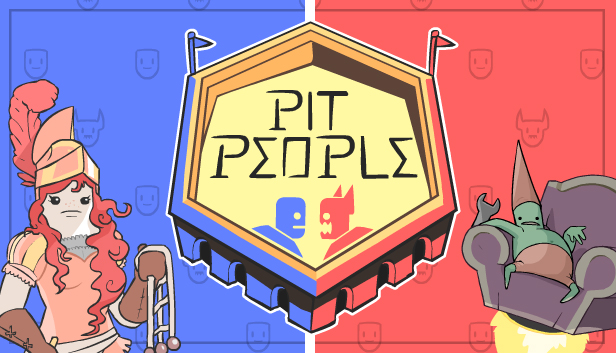
Pit People
Pit People is an indirect sequel to BattleBlock Theater, the game where The Behemoth really hit their stride in both comedy and gameplay. Naturally, I was excited to try it just to see what they’d do next, but also because continuing a story with such an infamously nonsensical ending was the nuttiest idea I’d ever heard. Upon playing, it turns out that the premise is just the tip of a nuttiness iceberg that includes six-legged space bears, sentient cupcakes with healing frosting, and a gargantuan array of goofy weapons and items. Thanks to a combination of outstanding voice acting and writing that’s equal parts sharp and silly, the game is downright side-splitting from start to finish. You’ll want to explore and undertake new missions just to see what insanity will be waiting for you.
Unfortunately, the gameplay is a significant downgrade from previous titles. Switching from 2D platformers and brawlers to turn-based strategy, especially such a huge and crowded one, was an ambitious decision, but I don’t think the developers knew what they were getting into when they made it. The player can only move units, and the units decide what to do after that. The frustrations of misbehaving pieces should be obvious, but this mechanic also makes certain characters and strategies completely unviable or outright detrimental – and the party-building wasn’t even particularly balanced to begin with. Lastly, this mechanic greatly diminishes tactical sensation. While you’re technically executing strategies, it only ever feels like ordering all-out charges for hours on end, which makes missions where the objective is just to defeat all enemies (i.e. most of them) feel extremely drawn-out.
The material for a deep, strategic experience is all here – units can be weak or resistant to certain attack types, some can launch or carry their allies, and some can periodically spawn minions – but it’s hard to appreciate much of it. Multiplayer gameplay is no more gratifying than single-player, and local co-op in particular seems to exist out of tradition more than anything, because the controller interface is decidedly inconvenient. On the other hand, using a mouse and keyboard is, for the most part, quite intuitive and straightforward. Dan Paladin’s signature cartoon art style, as much a source of laughs as ever, is ultimately a hindrance to the interface, as it’s profoundly bad at conveying tactical necessities amid the chaos. Conversely, The Behemoth’s other aesthetic trademark, a curated selection of community-sourced music, is at the top of its game here.